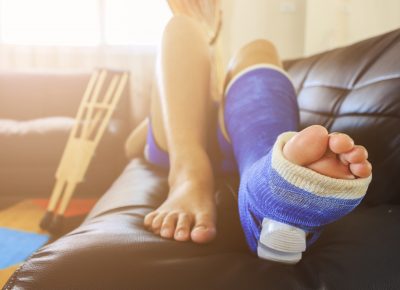Dislocations and Fractures are common bone and join injuries in the summer. Summer includes so many options for fun. Beach trips, summer sports, outdoor hikes, bike and scooter rides and playtime at the park – the possibilities are almost endless! Unfortunately, all this fun can make summer a particularly dangerous time of year.
The U.S. Consumer Product Safety Commission reports that nearly two million Americans are injured every summer doing popular summer activities. Children are especially vulnerable as they spend more time outside, often with less supervision. Even workers are more likely to sustain injuries during June through July according to the Bureau of Labor Statistics.
At Everest Urgent Care, your health and safety are our priority.
How Does a Dislocations Differ from Fractures?
A dislocation occurs when two bones slip out of place at the joint that connects them. A dislocation is usually caused by a sudden impact from a fall, blow or other trauma. You can dislocate almost any joint in your body including your ankles, knees, elbows, shoulders, hips or jaw. You can even dislocate your finger and toe joints.
When more pressure is put on a bone than it can withstand, the bone may split or break. A bone break of any size is referred to as a fracture. It can result from a fall, trauma, accident, direct blow or repetitive stress, as well as medical conditions that weaken bones.
What are Symptoms of Dislocations and Fractures?
It is often difficult to tell the difference between a dislocated joint from a bone fracture. Symptoms of both include:
- Visibly out-of-place or a misshapen limb
- Intense pain
- Swelling, bruising or bleeding
- Numbness and tingling
- Broken skin with bone protrusion
- Loss of motion
What Are the Risk Factors for Dislocations and Fractures?
Playing repetitive sports like baseball, tennis, swimming or volleyball or having a job that involves repetition, such as painting or lifting puts you at increased risk for a dislocation. Other risk factors may stem from traumatic events, genetics and previous joint dislocations.
Factors that increase your risk of fracture are:
- Smoking
- Drinking alcohol
- Steroids
- Rheumatoid arthritis
- Diabetes
- Previous low-impact fractures

Treating Dislocations and Fractures
Moving a fractured or dislocated bone may cause further damage, so get it treated as soon as possible. At Everest Urgent Care, x-ray testing is conveniently available on-site so that your medical professional can confirm the injury and / or provide you with the necessary information for an orthopedic specialist appointment if one is needed.
Dislocation treatment depends on which joint you dislocate and the severity of the injury. It may include manipulations to reposition the bones, medicine, a splint or sling, and/or physical rehabilitation. When properly repositioned, a joint will return to normal function again.
A plaster or fiberglass cast is the most common type of fracture treatment, although splints, braces and surgery may be needed depending on severity and location. Most broken bones can heal successfully once they have been repositioned and held in place while they heal.
Getting Treatment for Your Fracture or Dislocation in the Greater Philadelphia Area
If you suspect that you may have a bone fracture or dislocation, the medical professionals at your local Everest Urgent Care are ready to help! From bone fractures and dislocations to X-rays to any other urgent care needs, we are here to ensure that you have the safest summer possible.
We are open extended hours, seven days a week for diagnosis and treatment. No appointment necessary. For more information, visit us online HERE or call us in Upper Darby, PA at (610) 352-8000 or in Chester, PA at (484) 480-4700.

